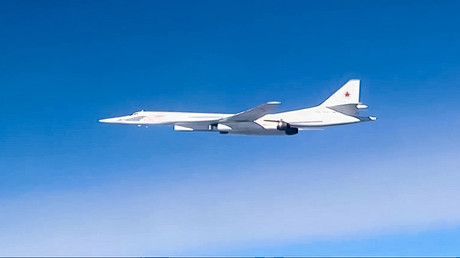Russia’s strategic subsonic PAK DA will use stealth tech, defense ministry confirms
PAK DA, Russia’s future subsonic nuclear-capable bomber, will have stealth technology incorporated in its planer, a defense official confirmed after touring a plant, where the advanced project is being implemented.
The Russian long-range aircraft is expected to undergo a major overhaul over the next two decades. The time-tested Tu-95 bombers would be phased out in favor or a yet-to-be named subsonic comber dubbed PAK FA. Russia will also resume the production of supersonic Tu-160Ms while working on the advanced “M2” version of the aircraft. In the meantime its existing fleet of Tu-22M3s and Tu-160 would be upgraded to the latest variants of the aircraft.
After touring this week the Kazan aviation plant, Tupolev’s main production facility and the linchpin of the modernization drive, Deputy Defense Minister Aleksey Krivoruchko said the work went as scheduled.
“We have checked the work on the priority project of the plant, the production of new Tu-160Ms. Overall, it goes according to schedule. There are some delays on several tasks, but others go ahead of the schedule,” said the minister, who was appointed to the position last month.
He added that the first Tu-160M built after relaunch of production is to enter service in 2021. The bomber, Pyotr Deinekin, was built partially from stored parts as part of restoring the underling technologies and made its maiden flight in January.
Deputy Minister also mentioned that the work was progressing on PAK DA, Russia’s future strategic bomber. The abbreviation stands for “Prospective Aviation Complex for Long-range Aviation” and most details about the project are classified.
PAK DA will be a subsonic long-range aircraft with a flying wing body. It will use stealth technology and be armed with hypersonic air-to-surface missiles, one of which is expected to have a range of 7,000 km. The aircraft itself may have a range of 12,500 km and carry a payload of up to 30 tons. It is expected to use engines derived from the NK-32, which was developed for the Tu-160.
While several models of PAK DA have reportedly been built on the Kazan plant, no photos were published. The closest hint at how it may look came from TsAGI, a leading Russian aerodynamics lab, which showed a flying wing model tested in one of its wind tunnels for the PAK DA project. The actual image may be unveiled later this year.
If you like this story, share it with a friend!






Comments are closed.